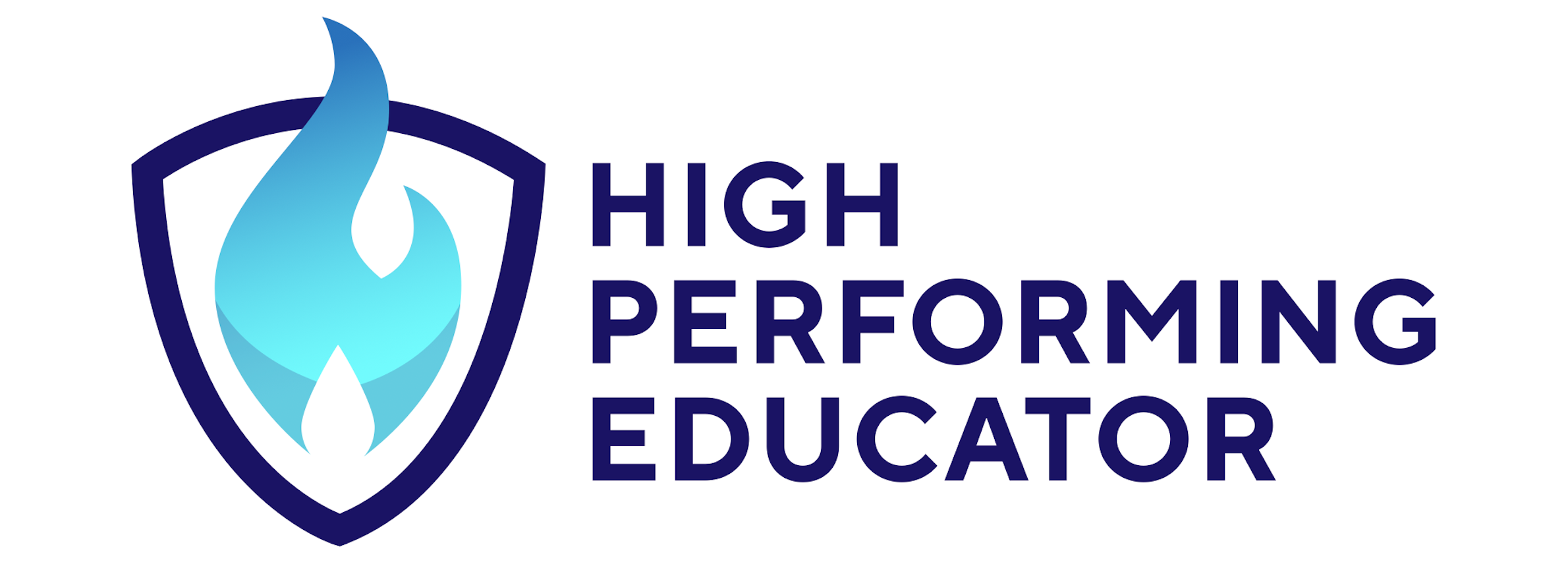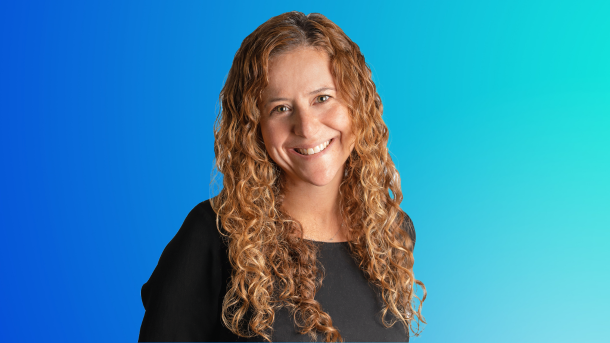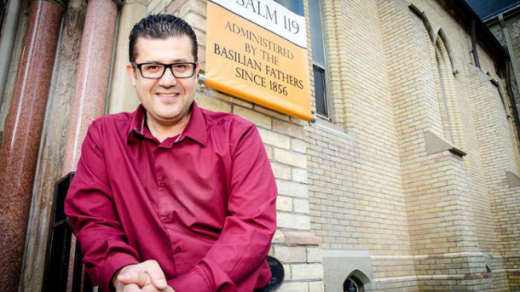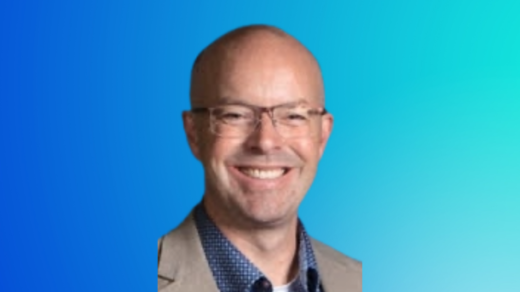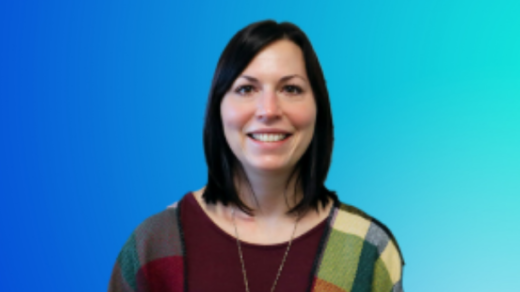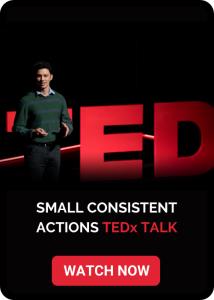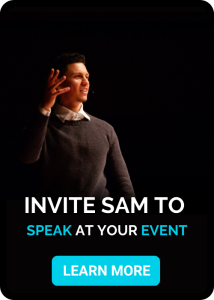About Sandra Nagy
Sandra Nagy (@edtechfest) has dedicated her career to driving innovation and building effective organizational strategy. Sandra began her career at Accenture as a Change Management consultant where she supported public and private sector clients through large-scale strategy and business transformation.
Sandra spent over a decade as a senior digital strategist at Pearson Education where she led multiple teams that worked across K-20 to transform curriculum and professional development resources with the use of technology. She was a member of a global team of educational technology champions focused on collaborating to solve problems in education. She engaged with stakeholders globally and was responsible for nurturing strategic partnerships with key customers and other like-minded organizations.
Prior to Pearson, Sandra worked at The Learning Partnership, a non-profit organization responsible for building stakeholder partnerships to support, promote and advance publicly funded education in Canada. She led a government and business-funded research project to look at blended, online and face-to-face, professional development for teachers in STEM courses. Sandra engaged in speaking opportunities across Canada sharing best practices in sustained, action-research driven professional development that leads to authentic community building.
With over 20 years of experience, Sandra has designed, developed and delivered hundreds of learning opportunities to thousands of employees and educators. She is a firm believer in the capacity of educators to drive future-skill development, and in sustained professional development that leverages a blend of learning tools. Sandra leads the Education Practice at Future Design School building strong academic partnerships with school leaders that help to drive their strategic priorities through consulting support, professional development and efficacious curriculum resources.
Sandra’s educational background includes a Master’s in Education from Harvard University focused on Technology in Education. While completing this degree she worked at TechBoston, an organization infusing technology programs into inner-city Boston schools; conducted published research into distance learning at the Concord Consortium; and volunteered through the MIT Media Lab teaching robotics to home-schooled students. Sandra also holds a Bachelor of Commerce focused on Organizational Behavior and Entrepreneurship from McGill University. During her time in Montreal she actively volunteered at the Montreal Neurological Hospital focusing on brain research, and taught within the Faculty of Management.
Connect with Sandra: Email | Instagram | LinkedIn | Twitter
Listen Now
Listen to the episode now on Apple Podcasts, Spotify, or on your favourite podcast platform.
Resources Mentioned
Master’s Programs in Education – Harvard University
Bachelor of Commerce – McGill University
The Future of Jobs Report – World Economic Forum
Future of Education Report – Future Design School
The Transcript
**Please note that all of our transcriptions come from rev.com and are 80% accurate. We’re grateful for the robots that make this possible and realize that it’s not a perfect process.
Sam Demma
Welcome back to another episode of the High-Performing Educator. This is your host, author, and keynote speaker, Sam Demma. Today’s special guest is an absolute trailblazer in the education industry. Sandra Nagy has dedicated her career to driving innovation and building effective organizational strategy. She began her career as a change management consultant at Accenture before moving into a role as a senior digital strategist at Pearson Education, where she worked for over a decade in the K through 20 education space to transform curriculum. She has traveled the globe doing work. She has worked with non-profits. She’s even done her master’s in education at Harvard University. Today, Sandra is changing the landscape of the future of education for our young people. And she shares so much impactful information and insights during our conversation here today. My hope is that you listen to this and feel compelled to reach out and ask some questions. She’s doing amazing work that I think could be very helpful for you and your schools and your students. Anyway, enough from me. I’ll see you on the other side of this interview. Enjoy.
Sam Demma
Sandra, Sandra Nagy, thank you so much for coming on the podcast this morning. For everyone tuning in, they might not know that you’ve done work in 65 different countries exploring the future of work. They may not know the work you’re doing with the Design School. Please start by just introducing yourself to the listener.
Sandra Nagy
I will do, will do. So I’m Sandra Nagy. I’m the Managing Director at Future Design School, and we’re an organization that is based in Toronto, so it’s nice to be with Canadians, but we work around the world, as you said, Sam. And our real reason for being is that we’re focused on the future of work is changing rapidly. And we know, especially in the last year, when you look at everything that’s happened with AI, that the world of work is changing faster than we can keep up with. And in K-12 education and higher education, there’s an impetus on us to really prepare students. And so our goal is to support deep competency and skill development alongside all of the other great stuff that happens in schools, and really giving kids exposure early and often to potential career opportunities and the skills and competencies that they need to succeed. So we work strategically with schools, we work through professional development with teachers,
Sandra Nagy
And so our goal is to support deep competency and skill development alongside all of the other great stuff that happens in schools, and really giving kids exposure early and often to potential career opportunities and the skills and competencies that they need to succeed. So we work strategically with schools, we work through professional development with teachers,
Sam Demma
Tell me more about what the future of work looks like. Yeah, and you mentioned it’s rapidly changing. From your research, where do you see it going?
Sandra Nagy
Yes, it’s a great question, and there’s a lot of research out there. Most recently, the Future of Jobs report from the World Economic Forum came out and talked about the fact that with the real proliferation of technology changes happening out there, that we’re set to lose about 89 million jobs or roles that exist in the world. And for the first time, we always see this, this statistic that says we’re going to lose a certain number of jobs, and then a certain number of jobs are going to kind of replace them. For the first time, we’re seeing a massive delta, where the number of jobs that are going to be replacing those jobs that are being displaced is significantly lower. So we’re talking, you know, 80 million plus that are going down and only about 60 million kind of net new jobs coming in. And so when you look at that delta, we’re poised for, you know, potentially great recession, people looking for work and jobs. And without the crystal ball that we’d all like to have to say what are the jobs of the future, what we focus squarely on are the skills that students need. So and really thinking about transferable skills, maybe things that people may have called quote unquote soft skills in the past are becoming the essential skills when you look at the workplace of the future. So what I mean by that is things like critical thinking, communication, collaboration, problem solving, and an entrepreneurial mindset. So whether you become an entrepreneur who, you know, starts the next Google or Tesla, or you go into an organization or a company with an entrepreneurial mindset, that’s what we’re trying to cultivate with kids. Where they look at the world’s challenges as opportunities that they can roll up their sleeves and have the creative confidence to dig into developing solutions. So problem solving is super key as we think about skill development.
Sam Demma
What challenge did you see that inspired you to embark on this path to try and solve this problem of creating more innovative young people in schools? Why this work? So why this work?
Sandra Nagy
It’s a great question. So myself and our CEO, Sarah Prevatt, and Sarah, it’s really Sarah’s vision that kind of enticed me to come to Future Design School was she had started and scaled and successfully sold a number of technology-based businesses. And when I met her, she was funding, through Venture Capital, folks that were bringing new ideas into the world. And she said to me, there’s lots of smart people out there that are solving problems that don’t necessarily matter or won’t necessarily have an impact on the future. And her working theory was we need to start younger. We need to start getting kids engaged in solving real, real problems when they’re in K-12 and get them to care about things like education and poverty and health care and security and believe that they have the capacity to actually develop the skills to solve those problems, that they don’t have to wait until they become an adult to have a real impact on the world, that it’s not actually the adults that are always changing the world, but that they can make real change, even from whatever their purview is. And Sam, when I was listening to some of the stuff that you were talking about, this notion of small, consistent actions that you can take in the world, really resonated with me because it’s that and equipping students with the problem-solving skills, teaching them how to deconstruct a problem, helping them to understand who it is that they’re actually solving the problems with, and understanding them walking a mile in their shoes, developing empathy for them, that you were talking about, this notion of small, consistent actions that you can take in the world, really resonated with me because it’s that and equipping students with the problem-solving skills, teaching them how to deconstruct a problem, helping them to understand who it is that they’re actually solving the problems with, and understanding them walking a mile in their shoes, developing empathy for them, and then, you know, getting ideas out there, getting real feedback, and iterating based on what you’re hearing. And we’ve seen kids develop incredible, incredible things. And we wanted to bring that into the classroom for teachers to say, okay, so how do you do this inside of the curriculum regardless of where you are in the world? How can you actually help students to uncover curriculum instead of standing up at the front of the room and feeding them content, but letting them uncover it? So hopefully that helps give you a bit of a sense of it.
Sam Demma
Tell me about some of the problems you’ve seen students tackle through your programming, some of the initiatives they’ve started.
Sandra Nagy
Yeah, absolutely. So I’m thinking about one student in particular that we’ve been following for the, for the long haul. Um, so Mick is a student, and I can actually share this video with you cause you, you know, people might want to see what she’s done. But Mick is a student who came through one of our programs, which is called the Young Innovators Program. And she saw a real need for the unhoused community in Toronto. And she saw that they were not getting the basic hygiene needs that they needed to really function. In as part of our program, she developed something called Penny Packs, which are packs that she’s taken out to the unhoused community. She’s galvanized her community to come together and donate, but really listened to what people who are unhoused needed, as opposed to making assumptions about, you know, you need a toothbrush or toothpaste. Some people do. What were the things that were missing? And every year she reimagines the packs based on what she’s hearing from real people out there. And she’s inspiring others to take action when they see something in their local community. So that’s that’s sort of one aspect of the student programming that we do. And those are kids that come into very specific programs. But what we’re trying to do is infuse that kind of thinking into all of school so that when you walk into a classroom, you’re able to engage in a problem, you’re able to engage in a real situation, and that you have choice and voice as a student on what it is that you want to focus on. No longer do we all need to be working on the same novel in a classroom. We’re all digging into the same novel study. What if we gave kids choice? What if we gave them voice?
Sandra Nagy
From the foundation setting, we’re able to get them to make decisions that make sense for them and to dig into things that they’re passionate about. In a world where content is just something you can grab from anywhere, how do you look at content and think about it critically? How do you know who the author is, where it’s all coming from, and how do you become sort of the master of the things that you want to dig into deeply?
Sam Demma
You mentioned earlier that these soft skills are now becoming the essential skills. What are some of those soft skills that the programming aims to develop in a young person?
Sandra Nagy
Absolutely, I’m so glad you asked that question. And I will also share, I think I sent to you some of our future of education reports, but we’ve developed what we call the portrait of a future ready graduate. And so what we’ve done is really from a research-based perspective, both academic and action research, which is what I like to call what happens in the classroom, right? You try something out with a student, with your group of students, and you kind of iterate based on who’s sitting in front of you. But we’ve developed this portrait that looks holistically at the skills students need to build. And it starts squarely in the center, looking at wellness. So, what we believe is that students need to walk into school feeling optimistic about their learning, feeling psychologically safe that they can be who they are and have a deep sense of their identity in the buildings that they’re walking into. Table stakes, right? If a child walking into a building doesn’t feel well enough to learn, nothing else matters. So, our portrait looks at that at the center.
Sandra Nagy
From there, we move into social emotional learning. So what are those skills that I need to build from that perspective? Then we look at learning strategies. So how do we cultivate metacognition and help students think about their thinking and being conscious pursuit of getting better? So we sort of build that foundation. And then we look at character traits. So we talk about things like curiosity, ambition, resourcefulness, empathy, stewardship. How do you kind of take control and really cultivate those character traits? And then we look at what we call future ready skills and competencies. And so in that bucket, we talk about critical thinking, collaboration, communication, and creativity, which are not new. You and I both went to school learning those skills, but they’re 21st century skills is what they’ve been called and we’re so many years into the 21st century, we need to be cultivating them with students. And then to that, we add global and future vision. We add entrepreneurial thinking. We think about equity and inclusion. And we think about design thinking or human-centered design or problem-solving skills that we can cultivate. The really key piece of all of this, though, is that when we talk about those skills.
Sandra Nagy
So lots and lots of schools that are embracing this. And the best part is what parents are reporting back is that their kids are asking more critical questions around the table. They have greater confidence as they’re talking about their learning and they can see the changes in their students and that’s really what we’re looking to achieve. We’re trying to start a skill-based revolution around the world. We’re trying to start a skill-based revolution around the world.
Sam Demma
I know you’ve housed a lot of your research in a beautiful report. Where can people access that resource if they’re interested in learning more?
Sandra Nagy
So I will definitely send you the links, but on our website you can sign up to gain access to our reports on an ongoing basis. We produce them yearly. Our next report is coming out at the end of January, but I’m happy to provide you with links to this year’s report, and then also to our special edition report, which breaks down that portrait that I just talked about as well. And always happy to chat. Also, if there are educators listening to this podcast, often we start by having a conversation about what your aspirations are for your school and what you’re seeing, and then we can support schools really deeply.
Sam Demma
Awesome. What opportunities are you seeing in 2024 that you’re very excited about in education?
Sandra Nagy
That’s a great question, Sam. I think that, you know, we’ve been through a really interesting time in education. The pandemic was a moment where people had to innovate by necessity. And I often talk about how the pandemic, for all of the negativity that came with it, was sort of this moldable clay moment, where we were playing with education. There were things that came out of it that were super positive for kids. So for example, elongated periods, you know how when you went to school, and there were 45 minute periods, and you’re jumping from class to class to class? Well, the pandemic by necessity made schools elongate certain periods, and some schools are not going back. And I think that, you know, this notion of innovation and education is something that people are continuing to talk about. Lots of people have gone back, they let the clay set and they didn’t wanna move beyond that. People were going back to the old, old, but as I look forward to 2024 and the clients that I have the privilege of working with, a lot of them are looking at this continuum of skill development and also talking to industry. So when I look at higher education as an example, we’re out there and talking to the regional employers in the jurisdictions that we’re working with and saying, what are the unfilled positions that you’re projecting? And what can education do to help prepare students to take on those roles? And the things that I’m hearing the most are students need the ability to narrate the experiences that they’ve had in school and the skills that they’ve developed. They need a better way to showcase the amazing things that they’re learning. So lots of schools are investing in professional development for teachers to help them think about how do I, we call it hack my curriculum to embed these skills. The other piece of that is assessment. So you can’t change education practices in the classroom without changing your assessment practices. And so, you know, preparing kids for the test or the exam is not the only way to assess what they know. And that’s what I’m most excited about is we have lots of people, especially with the proliferation of AI, saying, okay, so the essay that we used to write, you know, how can I tell if they’re quote unquote cheating? Cheating hasn’t changed all that much from before or after. My question back is, how can you change the assessment? What else could you do? What’s the project you could give to a child? What’s the podcast that they could create for you? What are the different ways to show what I know that are more real real than just writing a test? Not saying we need to throw away quizzes and tests completely. I think there’s a balance there.
Sandra Nagy
But I think we need to think of assessment, we call it journey-based assessment, as a journey of learning, as opposed to just getting to the end product or the last test. And I’m excited about what people are doing with assessment. And I think there’s so much room for growth.
Sam Demma
I’m wondering if the future design school has envisioned what they believe a perfect school looks like and how it functions. This may be something you have insight to answer, it may not be, but if you could wave a magic wand and change the period length, change the structure of a school, change the classroom layout, change the questions, change the curriculum, and build what your company believes is the most ideal learning scenario for kids, what would that look like?
Sandra Nagy
I’ve thought about this a lot, a lot. And I think that the ideal school in my mind is completely project-based or personalized inquiry-based. And, you know, when you think about kindergarten, I’m going to start there, and the notion of kindergarten by design being emergent curriculum or exploratory, where you put stuff in front of students and you let them explore and tell their stories and make sense of the world through exploration. And then you look at the change that happens when you move from kindergarten to grade one, it’s like hitting a wall. I went from this beautiful environment where I could explore and problem solve, and now I’m sitting in rows, not in all places, and there’s amazing things happening, but I would like to keep curiosity high. I’d like to keep problem solving high. And then you look at the change that happens when you move from kindergarten to grade one, it’s like hitting a wall. I went from this beautiful environment where I could explore and problem solve, and now I’m sitting in rows, not in all places, and there’s amazing things happening, but I would like to keep curiosity high. I’d like to keep problem solving high.
Sandra Nagy
And to do that, it doesn’t mean that you’re throwing away the baby with the bathwater. Kids still need to learn how to read. Desperately need to learn how to do math, and we need to make sure that their conceptual understanding of math is as good as their ability to do their times tables. And how can we leverage all of those skills in a problem solving world? So how can we give kids real things to grapple with at a developmentally appropriate level?
Sandra Nagy
And that doesn’t mean that we need to stay in this factory-based model where all kids in grade one are doing all the same thing at all the same time, because kids have different life experiences as they go through school, and depending on what you’re digging into, they have a different trajectory of growth. They’ve been exposed to different things, and allowing them to move at the pace, at the personalized pace that makes the most sense for them, where they have choice, voice, they’re problem-solving, they’re aware of their skill development, to me, that’s ideal. So what does that look like? You asked about the structures. I think the structures are different.
Sandra Nagy
I don’t think we’re talking about a bell based school schedule where every period is exactly the same length. We need to leave time for kids to be in flow, right? If I’m working on a project in my, my mind, it should be interdisciplinary. This notion of discrete, especially as you get to high school, discrete English and social studies or geography, history, like every subject has its place and the teachers don’t cross over and don’t do it in an interdisciplinary way. In my mind, that’s such a miss and such a loss.
Sandra Nagy
And my ideal school would be project-based, interdisciplinary, journey-based assessment where skills are being built on an ongoing basis, so where kids graduate with a portfolio that they can narrate. Not just a portfolio that you put stuff into, but rather, let me pull stuff out of my portfolio. What am I most proud of? And how do I know what to pull out at the right moment to showcase my development and my learning? You know, we have talked in the past about building our own schools, but instead we’re creating this network of schools that’s doing that now. And it’s super exciting to watch because it’s having a huge impact on kids.
Sam Demma
I was working with a really great private school in Vancouver called Croffin House, and their classroom structure is so cool. Some of their classrooms have oval tables, and rather than kids sitting side to side, everyone can see each other’s face sitting at the table and they debate topics. And this could be an entire class period. And I just thought it was so brilliant.
Sam Demma
And it’s not a new idea, but it’s not an idea that’s being implemented in every school. And I just think how cool would it be if more schools grabbed onto these ideas and built these structures so students can see themselves more in the work that they’re doing. And they can build real life skills that they can use in the future. So the work that you’re doing is amazing. This has been an insightful conversation. I’m sure that we’ll chat more as things unfold, as the work you do continues. Where can people reach out, ask you a question, get more information, and connect with you?
Sandra Nagy
Absolutely, they can reach out to me directly. So I’m just sandra@futuredesignschool.com. And I’m often the front line on folks that are thinking about transformation in education. So I would say reach out, you know, happy to jump on a call, hear the vision, share the vision, share the stories of what’s happening. Because what I’m talking about is very concrete in the approach that we take with schools. We have frameworks, we have research, we have protocols, and I’m happy to dig in wherever and share what’s going on. It’s a true passion. And as I said, I feel privileged to get to do this work with partners every single day and with a team that is amazing. And they’re real dedicated educators, entrepreneurs, engineers, designers that are all about how do we make the world a better place with education being at the center of that.
Sam Demma
I’m so excited to see the innovation that continues as a result of your work. Thank you for doing what you do. Thank you to your entire team. I would love to be a part of a future school if you decide to include in the model building your own in the future because I think it’s definitely a need that we all have, especially here in Canada. And I just, I’m so grateful that you’re doing this work. Thank you for taking the time to come on the podcast. I encourage you, the listener, to reach out to Sandra to have a conversation and I wish you all the best in 2024, Sandra. Keep up the awesome stuff.
Sandra Nagy
Thank you, and Sam, thank you for all the work you’re doing as well.
Join the Educator Network & Connect with Sandra Nagy
The High Performing Educator Podcast was brought to life during the outbreak of COVID-19 to provide you with inspirational stories and practical advice from your colleagues in education. By tuning in, you will hear the stories and ideas of the world’s brightest and most ambitious educators. You can expect interviews with Principals, Teachers, Guidance Counsellors, National Student Association, Directors and anybody that works with youth. You can find and listen to all the episodes for free here.
